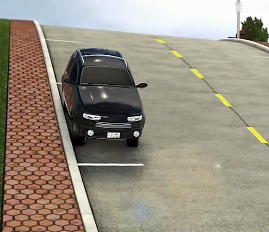Lesson Four: Entering and Exiting Traffic (3.4)
Entering and exiting traffic are common maneuvers. Performing these maneuvers safely requires the combination of skills, techniques, and judgment. Before entering, crossing, or exiting traffic you must have enough space for your vehicle to fit without interfering with other traffic. Determine whether you can proceed by knowing how much time it takes to turn or proceed forward in traffic. You must have a sufficient gap. A gap is the space between two vehicles.
To manage space and communicate your intentions, follow these sequences:
Entering & Exiting Traffic- MSMOG
- Mirror – check rearview mirror
- Signal – the direction you want to go
- Mirror – check side view mirror on the side you intend to go
- Over the shoulder – check the blind spot on side you intend to go
- Go (Entering) – Look to the target area, enter traffic, cancel signal, recheck the rear
- Go (Exiting) – Pull to the curb, cancel signal, secure the vehicle
 Entering, Crossing and Exiting Traffic
Entering, Crossing and Exiting Traffic
Parking on a Hill
 Parking Fails
Parking Fails
When parking on a hill you must ensure that your vehicle will not roll into traffic. By law, when parking on a hill you are required to secure your vehicle by turning your wheels and activating the parking brake.
Uphill with a curb
Turn the tires toward the road
All other hill parking
Turn the tires away from the road
 Parking on a Hill
Parking on a Hill
Essential Questions
-
What steps are used whenever you enter or exit the traffic flow?
-
What direction should you turn the wheel when parking uphill with a curb?
The open space between two approaching vehicles which will afford a driver enough time to move into or through another lane of travel without interfering with other road users.
A chin-to-shoulder movement to see objects hidden on the side of your vehicle.
A fixed object that’s as far ahead as you can see above the center of your intended lane.